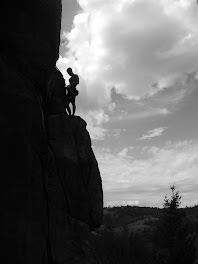I remarked to a friend, just this morning, that I wanted to become a leading researcher in Visual Ethnography; studying vernacular photographs for traditions. He didn’t respond for a while, then without missing a beat changed the subject.
I can only surmise what he was thinking, it was a virtual IM discussion, I didn’t ask though either. I think he was thinking..you already do too much why do more? Because I love these photos, slides, and negatives I have collected over the years. I love the stories they tell, the lives they depict, and the history they silently capture. It is my challenge to bring all of that to life.
I am not a seasoned researcher. I have completed my Ph. D. , yet, that does make me an expert in this field. I retrieved our copy of Denzin and Lincoln’s Handbook of Qualitative Research from my husband’s bookshelf. I know I am going to have to research how to research this archive so I can set into my mind a plan for going forward.
On page 703 begins the essay by Ian Hodder on The Interpretation of Documents and Material Culture, in that he writes of “how to interpret mute evidence …even though separated from the author, producer, or user…” .
Photographs are, in my opinion, a part of the material culture that Hodder defines. He states that, “
Material culture, including written texts, poses a challenge for interpretive approaches that often stress the importance of dialogue with and spoken critical comment from participants. Material culture evidence, on the other hand, may have no living participants who can respond to its interpretation.” Hodder is answering the questions I have..can I conduct a research of these snapshots, a frozen moment in time in a way that will provide some meaningful insight into the experience of being human? The answer to that is easy, I think so. Will this research have some premise in being credible, I believe so, but even beyond my observations of studying these photos I welcome your comments and observations, lending even more credibility to this study.
I can provide even more credibility to this study if I can provide you with some context, dates, times, place and event behind these photos. I can do that for some, but not all. So how do we comment and observe on those photos that I do not have this type of information? We can do that only within the context of our own experience, and that is what makes this interesting.
We do this within the context of cultural studies.
Culture Studies can be defined as:
approaches subjects holistically, combining feminist theory, social theory, political theory, history, philosophy, literary theory, media theory, film/video studies, communication studies, political economy, translation studies, museum studies and art history/criticism to study cultural phenomena in various societies. Thus, cultural studies seeks to understand the ways in which meaning is generated, disseminated, and produced through various practices, beliefs, institutions, and political, economic, or social structures within a given culture. (retrieved from http://en.wikipedia.org/wiki/Cultural_studies)
As you can see I am laying the groundwork for my study. If I were writing a dissertation I would conduct my study within the context of one of the theories above, perhaps feminist theory or social theory to narrow the scope of my study. This is a personal mission for me though, by the end of this study I may have reviewed all of these photographs within the context of the theories presented above. I am almost five years into building this collection, it is difficult to know where this journey will take me in five years, ten years or a lifetime.
As I go along sharing these photos with you I want to present a disclaimer to you. I have purchased these photos outright via online auctions, these are photos I have taken myself, etc. In these terms I am the copyright owner, I have no means to research the original owner of these photos. These photos are not used for materials or commercial gain by myself and are used only in research and for educational purposes.
Normally I try to study or will present photos from the 1800’s – 1950 the first photos below are from a wedding in the 1980’s:





Older wedding pictures:

Family pictures, family traditions.
And don’t you love the fact that they included the family dog front and center?


And the cars often make the family photo too:

Note the hood of the care in the foreground of this photo taken of these four lovely women.

I love this one taken in front of the family vehicles. Were they leaving and someone said,"Let me get a picture real quick…” Could be…

When I saw the picture below I wondered who is sitting at the kiddy table? And for most of you who celebrate big family dinners for Thanksgiving, Christmas or whatever your traditions are you will know what I am talking about.

This picture answers that question (oops I should have flipped the one above)

Every family has one right? The clown, the goof, and the one who stands out..who is that in the picture below?
A really great picture to study. Check out the drapes, the lamp, and the table cloth on the gate legged table. Good stuff!

A different sort of family shot. Brothers? Probably.

A vintage wedding photo:

A great shot of a more “modern’ couple:

What I would consider a family travel shot:


From the shots I have from Russia:

Kids:


































































